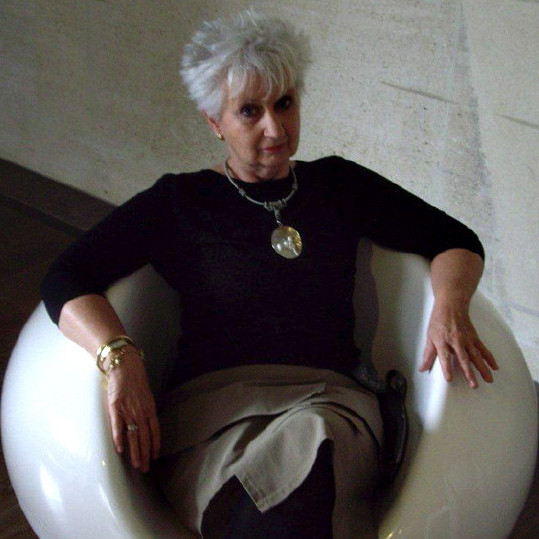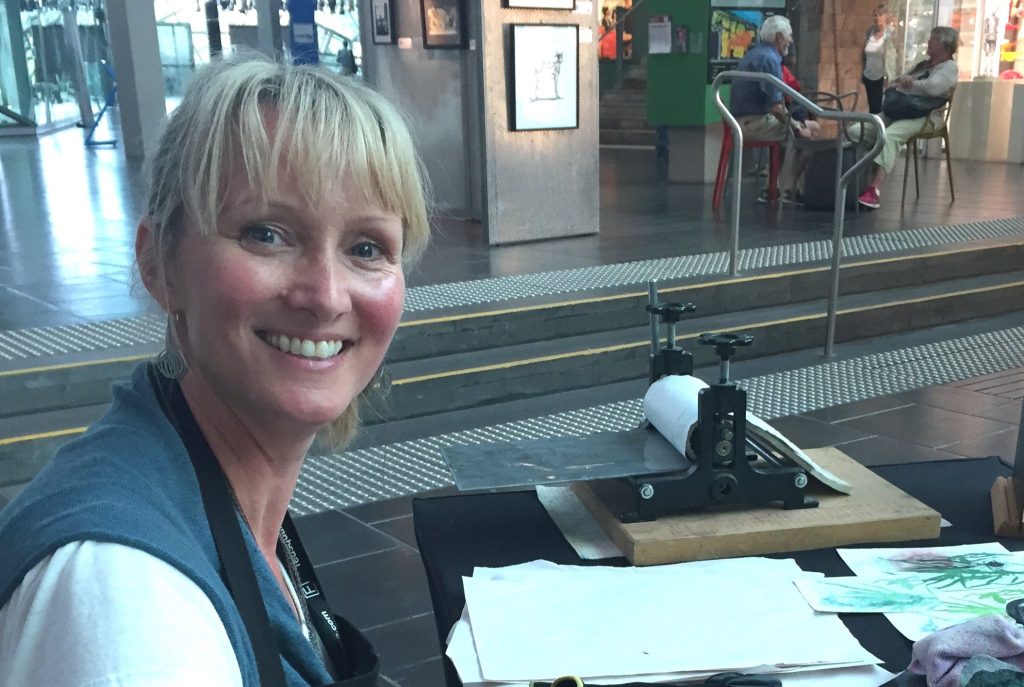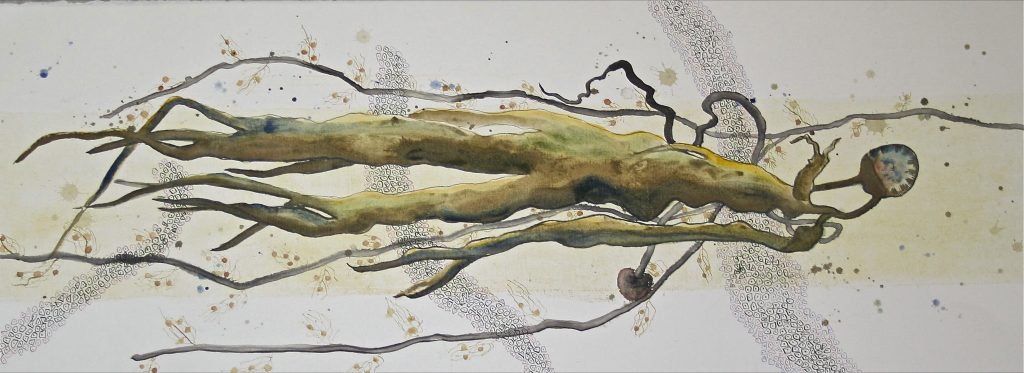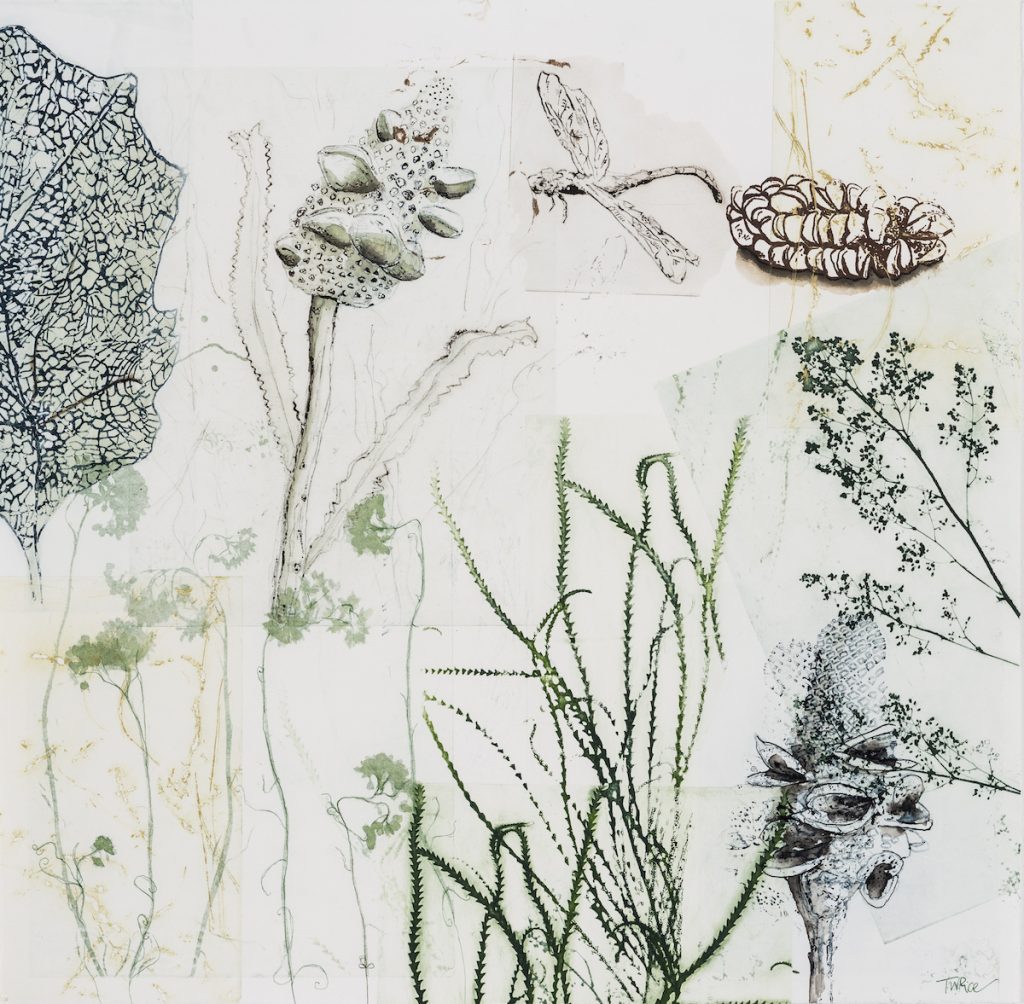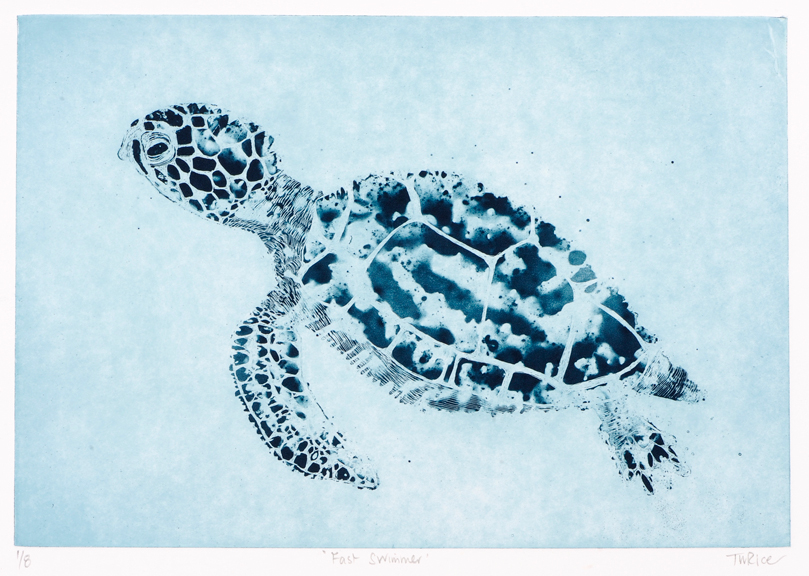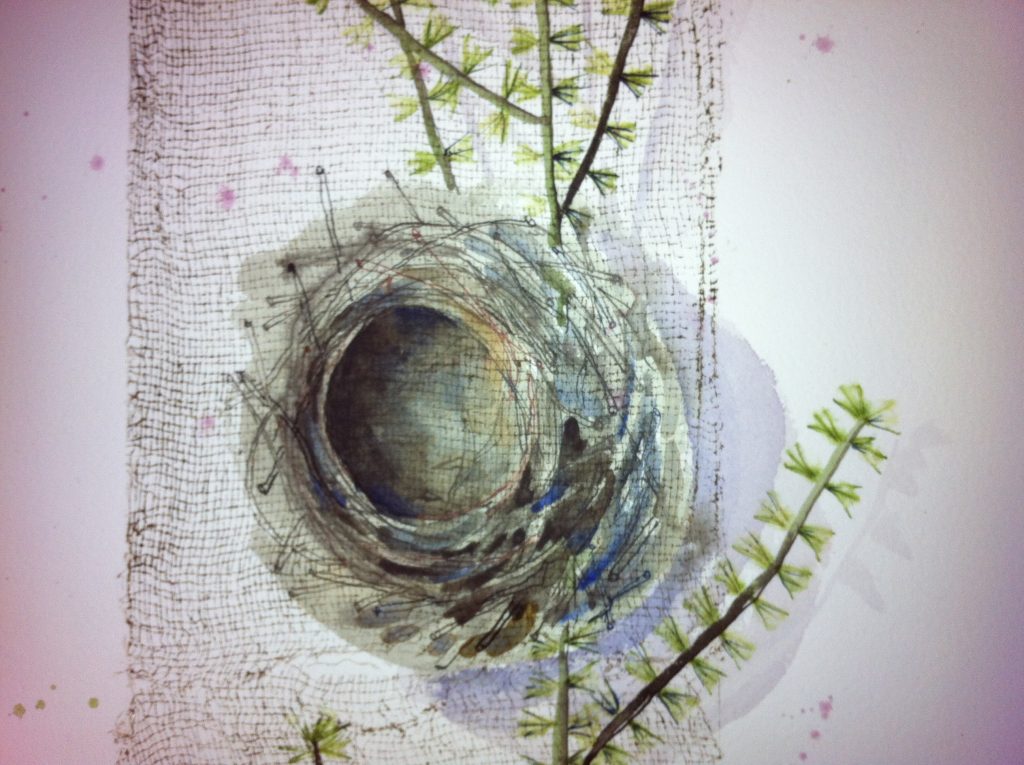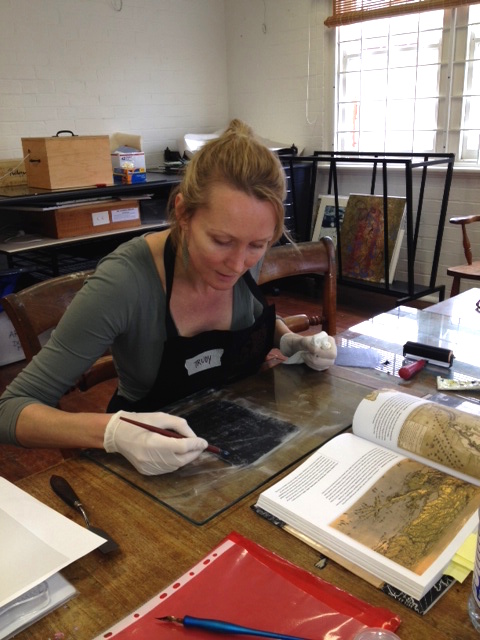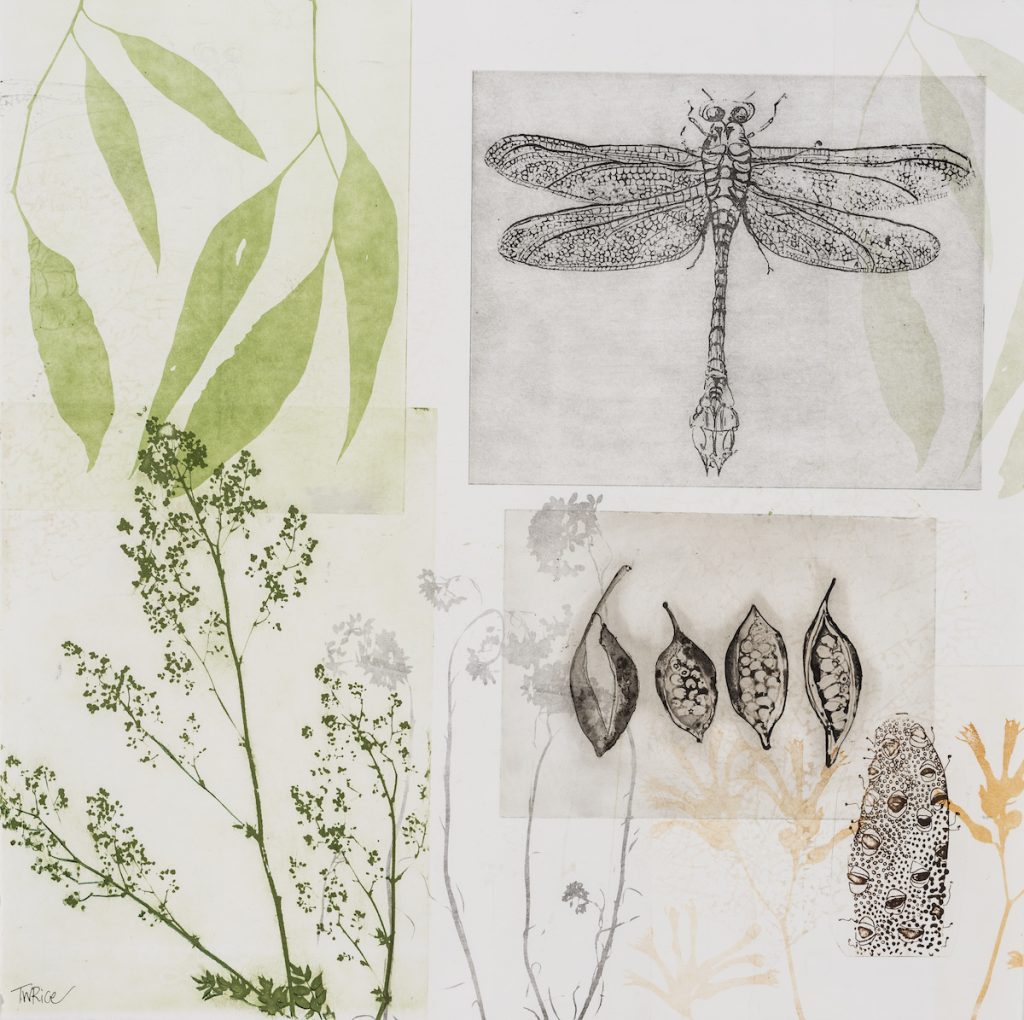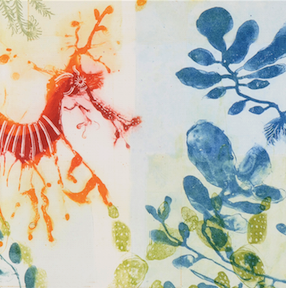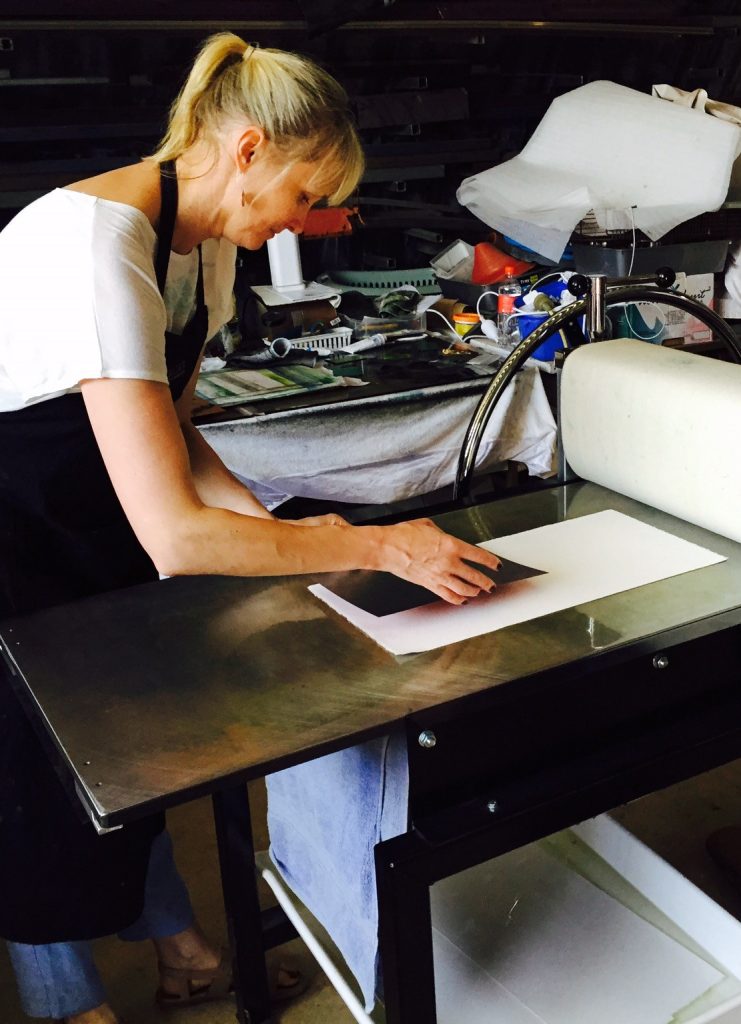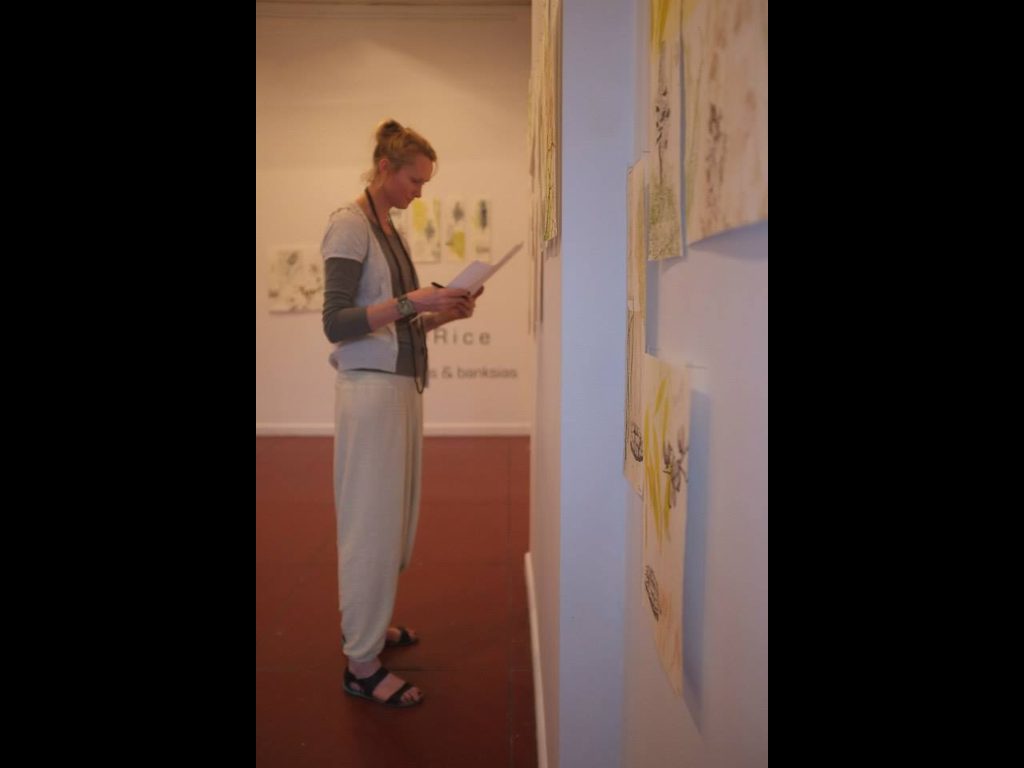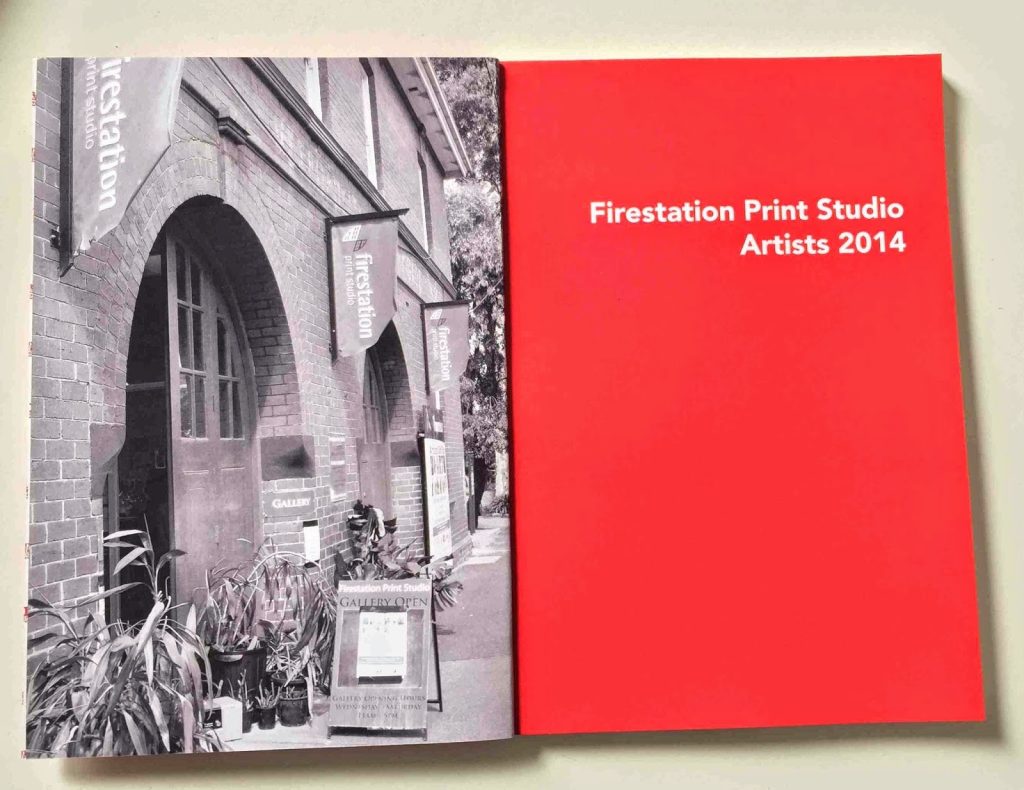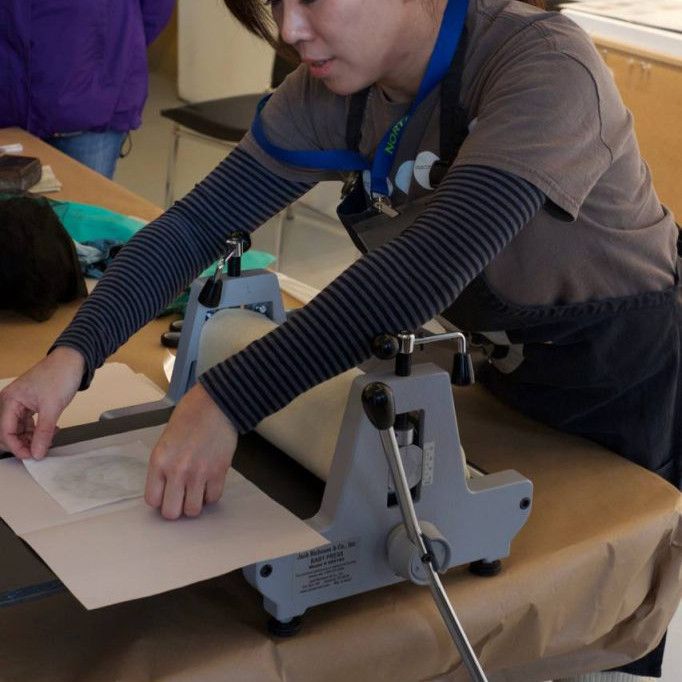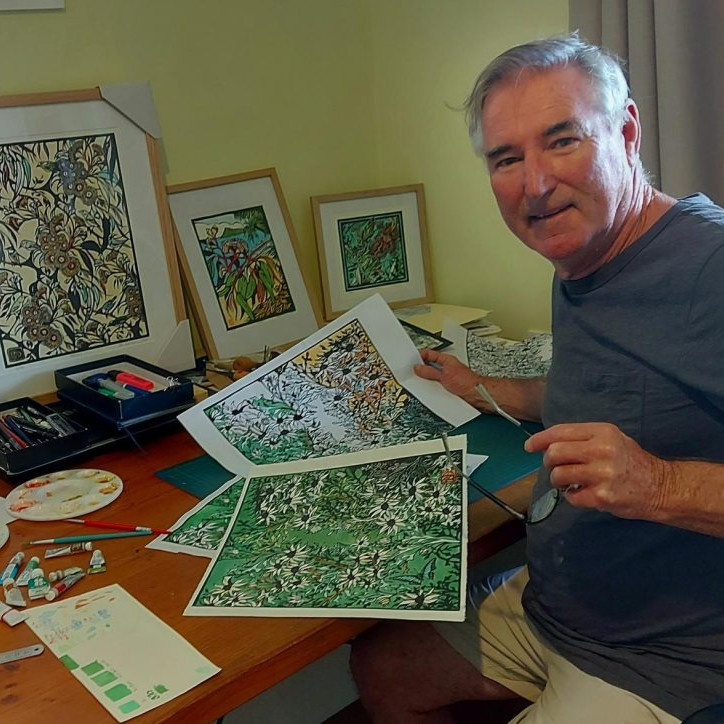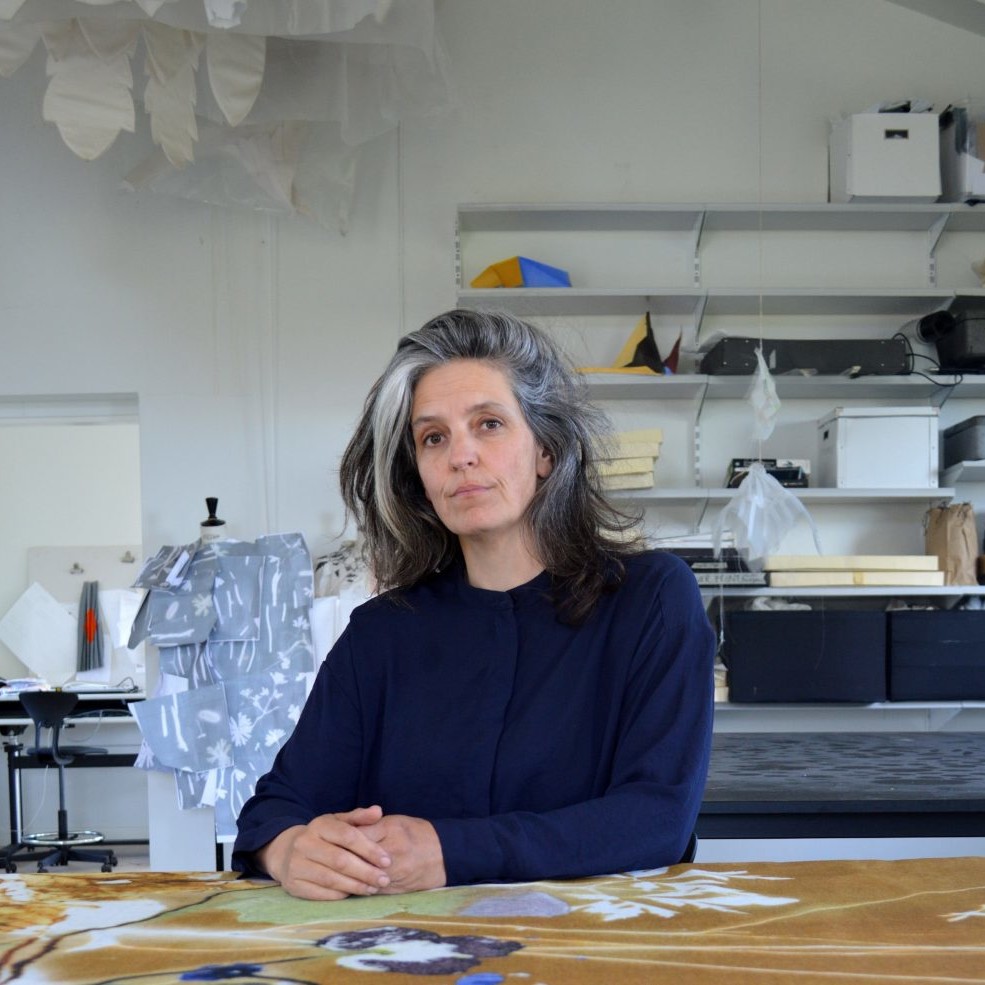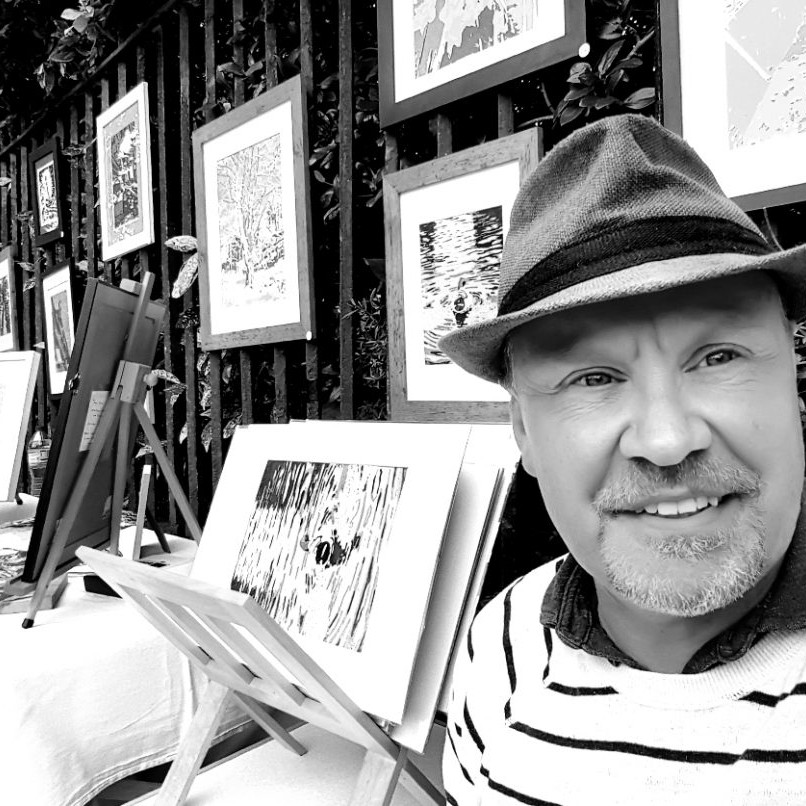Trudy Rice Printmaker - Melbourne, Australia
Discuss how your work has moved in direction via three solo exhibitions Fragility, Dragons and Banksias and Oceanus?
My work has always been about nature. From animals and flowers to the bush and the sea. I see that even a stick on the ground has the potential to be captured creatively in some way.
I started as a painter, then taking myself back to arts school I discovered printmaking. With solar plate etching, now my preferred medium, I start with an ink drawing which brings me back to my roots of painting.
The fragility of our environment was the beginning… hence the title for my first solo exhibition …
Illuminating the subtle depths, 28 x 27 cms, 2012, Collagraph, pen, ink and watercolour.
FRAGILITY a cross between the land and the sea, then with DRAGONS & BANKSIAS, my second solo exhibition, I delved deeper into the bush in and around the Otway Ranges in Victoria and felt that my drawings became more intricate.
Banksias Dragon Blue Skeleton Leaf, 50 x 50cms
With my latest exhibition OCEANUS in July 2015 at Port Jackson Press Print Gallery, I shared my empathy and passion for the sea, taking the viewer on an underwater journey.
This latest series of work has, I believe, brought my solar plate collaged printing and use of pigments and colour to a new level of sophistication and complexity
Fast Swimmer, Edition 1/8, 38 x 28 cms
Give us your thoughts on the importance of exhibitions for an artists.
Timelines
I believe 2 years is a reasonable time span for an artist to create a new body of work. OCEANUS came quickly after DRAGONS & BANKSIAS and this was due to represented by a new gallery; Port Jackson Press Print Gallery.
I must say that I tend to work better on a deadline, it gives me true focus and pushes me to extend my process. I have a fairly busy life (with 4 children) so my time is precious, but when I get into the zone of creating, I really just go for it.
Nest detail, 2012, Collagraph, ink, and drawing
Themes
I have tried other genres like the figure, city-scapes and the like, however I keep coming back to the thing that creates a fire in my belly… the bush and sea. I think it’s great to be challenged and try new genres and techniques, they can inform the things you love and the way you work even more. I like to capture a moment, often fleeting, so some images are an impression and some are more detailed which in turn informs the way I work and the results I produce.
Red and Orange Weedy Sea Dragon, 2015
Pushing Boundaries
Trying new techniques, taking a class, seeing exhibitions all help to push the bounds of my work. I run a critique group. ”The Artists Salon” which has really helped my work to grow and increase in complexity. Conversations with other artists bring a richness and insight to the way I create work.
You have curated many exhibitions discuss this aspect of your art life?
Curating exhibitions is an extension of my fashion & event management days. A love of art and creativity and seeing things differently, is a real passion. I currently convene & curate the Albert Park College Art Show, now in its 5th year, with over 300 artworks on display from professional, amateur and student work, it is a great mix and such fun to curate in terms of making the space feel intuitively like a collection rather than an eclectic mix, it is certainly challenging but exciting and enjoyable.
Discuss your work and how you use solar plate etching?
Solar plate etching is non-toxic and therefore appropriately compliments my passion and sensitivity for the environment… using the sun and water to etch a plate rather than the acid that traditional copper and zinc etching use.
Discuss the layering technique to your work?
What you will see in one of my prints is many plates individually inked up and run through the press. I will often work on over 20 pieces of paper at any one time. Intuitively working with each image to see which will suit which piece of paper.
The Magnificent Dragon and Pods
When and how do you decide to use colour in your work?
Colour is a huge part of my work… I feel an emotional connection to colour. I generally mix my colour and not one of them is directly out of the tube, which is exciting and akin to being an alchemist. I’m certain many artists feel that the process of mixing paint alone has a creative feel about it.
Pink Spotty Crab, Blue Starfish. 2015, 38 x28 cms
You collect and use materials for your prints expand on this technique?
Collection and observation is at the core of my practice. I’m forever finding a bit of seaweed from the beach or a Banksia stem from the bush (I even found a Banksia seed in a Bunnings car park once) I call them ‘specimens’ and have many boxes filled with treasures so at any given moment I can place myself in nature.
Red Weedy Sea Dragon, 2015
Comment on Print editions in relationship to your work?
I don’t mind printing editions, however my favourite way to work is intuitively which means that each print is a unique state, it also means that not one print will ever be exactly the same as another, especially as I mix the pigments for each colour and the plates are placed intuitively on the paper.
You have work at the Olivia Newton John Cancer and Wellbeing Centre at the Austin Hospital in Melbourne. Discuss your thoughts on the value of art in healing and wellbeing?
I believe viewing art, appreciating art and art making can extensively heal the body and soul. When you see an artwork that really resonates with you, it touches your inner core. Creating quite a flow of emotion. I remember seeing a Monet for the first time in the flesh and being brought to tears. It completely struck a cord very deep within. So the value of art in places such as hospitals and medical centres can evoke a feeling of relaxation as well as being uplifting.
Discuss why you and many other printmakers join print studios?
I joined the Firestation Print Studio in Armadale when I was almost finished arts school. It is a great community space, a place where I could continue to be supported as a beginning artist. I didn’t have my own press back then and as a member I could go and print at a reasonable price. This particular facility is open 24 hours a day; so great for managing your time.
The advantages of this sort of facility are a community of like-minded artists, information, mentoring and collaboration. The Firestation always has a group exhibition to enter giving members an opportunity to make work and show it in the public arena.
Discuss the camaraderie of being a member of the Firestation and also why you played such an active Committee role?
After joining FPS I could see the facility had many great opportunities to offer artists and the local community. I joined the Committee of Management to assist in giving the facility support. I have been a curator in the gallery, graphic designer (rolling out their new identity) the Secretary & President on the committee. I have recently resigned from the committee after 5 years to allow myself the time and space to focus more on my own arts practice.
Expand on the book that you were so involved in for the Firestation?
The FPS Artist book was a wonderful way to showcase the amazing printmaking talent we have in Australia. Members of FPS from all over Australia were invited to provide up to 6 images and text, which I then designed into the book. We printed 100 copies and also produced a limited edition hand-bound version. The Manager, Edith May procured many wonderful places for the book to reside such as the State Library of Victoria, Melbourne University Ballieu Library, Latrobe University Library and the State Library of Queensland. A really satisfying project to be involved in.
Contact details.
Trudy Rice, Melbourne, Australia
Interview by Deborah Blakeley, September, 2015
Think a colleague or friend could benefit from this interview?
Knowledge is one of the biggest assets in any business. So why not forward this on to your friends and colleagues so they too can start taking advantage of the insightful information the artist has given?
Other artists you may be interested in:

